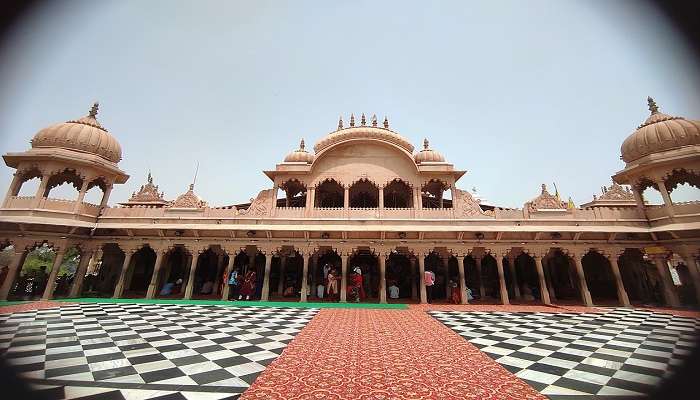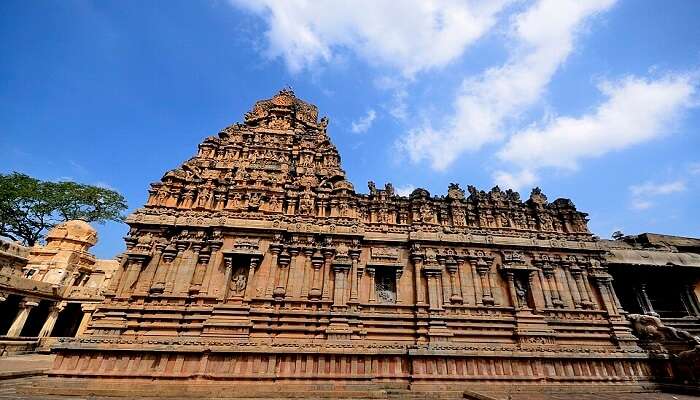Guide To Nature Interpretation Centre The Perfect Stop For Nature Enthusiasts To Explore In 2025

The Nature Interpretation Centre is your first stop for exploring the wonderful world of wildlife in West Bengal. As a traveller with curiosity, you’ll find yourself immersed in a world showcasing the region’s rich flora and fauna. From the Himalayan foothills to the mangroves of Sundarban, the centre offers a complete view of the geography of the flora and fauna of this region. Whether you’re passionate about wildlife or simply looking to connect with nature, the Centre provides an opportunity to deepen your understanding and appreciation of the environment. Add this to your travel itinerary and enjoy the rich diversity of West Bengal’s natural landscapes.
About Nature Interpretation Centre
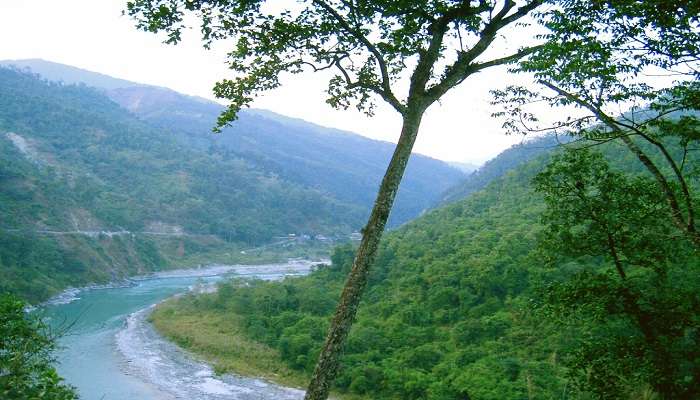
Nature Interpretation Centre enhances people’s appreciation of natural and cultural resources through credible information prepared in various formats intended to communicate this information. Such institutions are usually located near cultural, historical or historical landmarks that act as museums of the present. Using games, trails, and educational activities, they aim to facilitate people’s interactions with nature and the environment, thus popularising the conservation concept.
Also Read: Places To Visit In Kalimpong
Architecture Of Nature Interpretation Centre

Image Credit: Jayantanth for Wikimedia Commons
Nature Interpretation Centre architecture reflects on both functionality and environmental Responsibilities containing sustainable designs and the Centre’s layout. These structures integrate the interior with the exterior, availability of open floor designs, and natural lighting alongside the use of local materials. These include pre(post)structural forms of architectural adaptations of buildings for the exhibitions, lookout points, and related variables such as aqua terrariums.
This is due to support laboratories which aid in research activities available and audio-visual rooms which aid in education. There is an emphasis on the accessibility of path and interpretation and water control measures; this high-density module interferes with the ecology as little as possible.
Nature Interpretation Centre: Famous Attractions Nearby
Here are some additional attractions and activities near the Nature Interpretation Centre in Kalimpong that can enrich your visit. Explore nearby attractions, natural wonders, and facilities to enhance your overall experience. Discovering what’s around will help you create a more engaging and enjoyable visit to the Nature Interpretation Centre.
1. Buxa Reserve
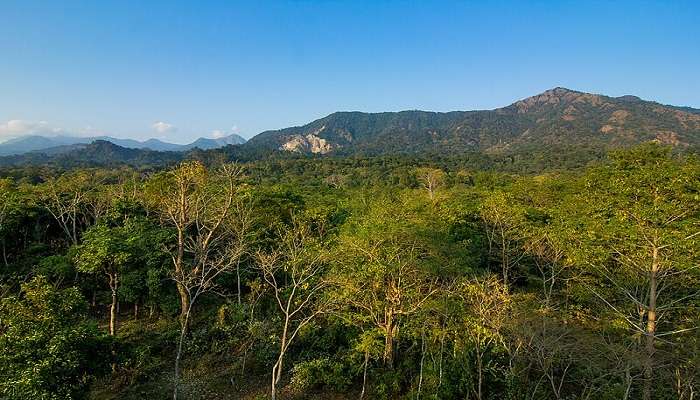
Image Credit: Swaroop Singha Royfor Wikimedia Commons
Located in the extreme northeastern part of West Bengal, Buxa Reserve is amongst the biologically richest areas attracting both biophiles and wildlife tourists. This covering for the heads developed from the Rajabhatkhawa Nature Interpretation Centre is filled in the woods with a powerful badminton committee of various classes of plant life and animals.
The tourists can opt for guided tours with experts to some wild forests where rare sights of animals such as Indian buffaloes, elephants and different sorts of deer might be caught in the jungle safari tours. This is also a bird watchers’ paradise since over 300 bird species have been noted to inhabit the reserve. Fluently winding rivers and still, clear streams enrich the linen of terrains across the nation. For more fun, adventure enthusiasts can go for night safaris or get involved in conservation whereby they learn more about the balance of this park’s ecosystem.
Timings: 06:00 am to 05:00 pm
Entry Fees: Rs. 150 Per Person
Related Post: Things To Do In Kalimpong
2. Neora National Park

Image Credit: Anirban Biswas for Wikipedia
Neora National Park is one of the relatively lesser-known destinations of West Bengal nestled in the eastern Himalayas. The Interpretation Centre is located at Lolegaon and as a gateway to the park provides fundamental information for the tourists. Here one can study the specifics of a park with subtropical to temperate forest biomes, as it transitions toward the northern latitudes.
The centre provides all types of information on trekking trails, camping grounds, and the plants and animals found in the park. There are restricted wild creatures living in Neora including endangered species such as the red panda, clouded leopard as well as the black Himalayan bear. Trekking through most of the region offers lush green valleys, waterfalls, and mountains shrouded by mist. It also acts as an important venue for the conservation of the region’s watersheds.
Timings: 09:00 am to 04:00 pm
Entry Fees: Rs. 130 for Indian Nationals. Rs. 500 for Foreigners
3. Kolakham

Image Credit: Wikimedia Commons
Located in the remote parts of West Bengal more precisely in the district of Kalimpong, Kolakham is one of the best-kept secrets that attract tourists in love with great views of the Himalayan Mountains. It is a very peaceful place that is nested in the middle of green forests which makes the place ideal for tourists and especially bird watching. The tourists have the opportunity to take a tour around the tea gardens, go trekking through the rhododendrons trail on the Singalila Ridge, as well as meet the friendly Lepcha people. Kolakham is naturally calm and possesses a healthy climate that makes it ideal for people who want to get away from the busy human societies of the cities.
Timing: Open 24 hours
Entry Fee: No entry fee
Related Post: Places To Visit In Sikkim In Summer
4. Pedong

Image Credit: Subhasis Chakraborty for Wikimedia Commons
Located at a height of 5,100 feet above sea level, Pedong is a small but picturesque town with great historical value. The Sangchen Dorjee Monastery is one of the prominent Tibetan Buddhist Monasteries which attracts tourists as well as the pilgrimage. For archaeology enthusiasts, there is Damsang Gadi, an 8th-century fort which was an important strategic point. Another place of worship and architectural interest is the bright temple complex, Mangal Dham. These are the beautiful sceneries of the Kanchenjunga and the Sikkim Himalayas visible from Pedong. Wrapped into a delightful package of natural endowment and historical charisma, the town offers a great deal of value for the sophisticated tourist.
Timing: Open 24 hours
Entry Fee: No entry fee
5. Mangal Dham
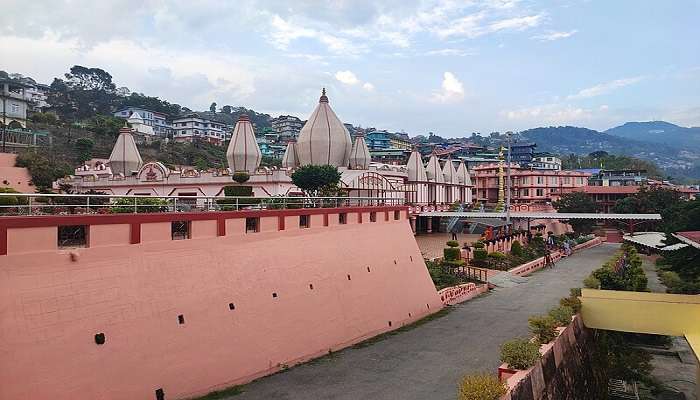
Image Credit: Sumitsurai for Wikipedia
Mangal Dham is a highly-quiet religious place of worship and site of pilgrimage concerning the Lord Krishna and is located in Kalimpong. This active temple with admirable paintings and pavements of many colours is dedicated to Guru Mangal Das Ji. This structure has a prayer hall or a masjid, a meditation facility, and verdant gardens. People can have a relaxing walk through the area, chant prayers, and listen to and understand the principles of the Guru Mangal Das, Ji. Mangal Dham offers a sense of spontaneous spirituality and devotional serenity and therefore often receives a considerable number of pilgrims as well as tourists alike.
Timing: 9:00 AM to 6:00 PM
Entry Fee: No entry fee
Related Post: Best Resorts In Sikkim
How To Reach Nature Interpretation Centre Kalimpong

Organising your trip to the Nature Interpretation Centre is critical for experiencing this nature learning centre effectively. Knowing the various modes of transport and the routes to be taken would assist in a trouble-free and fun trip. These directions and travel tips will make it easier for you to get to the centre of the town as this guide will indicate.
By Air:
- Nearest Airport: The nearest airport is Bagdogra Airport, located about 75 km from Kalimpong.
- From the Airport: You can hire a taxi or take a pre-arranged vehicle from the airport to Kalimpong.
By Train:
- Nearest Railway Station: The nearest railway station is New Jalpaiguri (NJP), located about 70 km from Kalimpong.
- From Railway Station: You can hire a taxi or take a shared jeep from NJP to Kalimpong.
By Road:
- From Major Cities:
- From Siliguri: Kalimpong is about 65 km away. You can take a taxi, shared jeep, or bus from Siliguri to Kalimpong.
- From Darjeeling: Kalimpong is approximately 50 km away. You can hire a taxi or take a shared jeep.
- From Gangtok: Kalimpong is around 75 km away. Taxis and shared jeeps are available for this route.
Further Read: Offbeat Places Near Kalimpong
When planning your trip to West Bengal, ensure that the Nature Interpretation Centre is on your list of places to visit. Let the knowledge acquired here inform your wanderings through the unspoiled woods and picturesque sanctuaries of the state. Because of the intricate connections experienced in an ecosystem, you’ll not only gain more out of your travelling. Still, you shall also be a more responsible and mature visitor to this part of India.
For our editorial codes of conduct and copyright disclaimer, please click here.
Cover Image Source: NatureCenter for Wikimedia Commons
Frequently Asked Questions About Nature Interpretation Centre
Is it possible to take photographs inside the Nature Interpretation Centre?
Yes, photography is allowed but flash photography may not be allowed because it may cause damage to the exhibits.
Is there a possibility of taking a guided tour at the Nature Interpretation Centre?
It’s advisable to check if the guided tours are available and at what cost as most centres incorporate the tour in the entrance fee but it has a fixed timetable for the tour.
Is the Nature Interpretation Centre good for the children?
Absolutely! Many of the centres also incorporate elements of games and play that are aimed at children and put up various activities to entertain and educate the young.
Is one allowed to volunteer or get involved in activities in the centre?
Usually the Nature Interpretation Centres are involved in volunteerism but one must confirm this at the information desk.
What are Nature Interpretation Centre timings?
The centre is usually open from 10 AM to 4 PM, but it is advised to check the timings before planning a visit. The centre remains closed on Thursdays
People Also Read:
Museums In Chisinau Museums In Sofia Bloemfontein Museums

With a passion for exploring and travelling to the roads long forgotten, experience the world through enthralling stories and adventures. Join me as I share my experiences at some of the world’s most popular tourist destinations and quench that pestering curiosity with something exciting!



